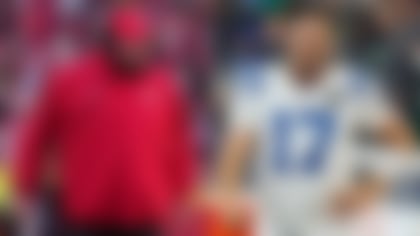With the progress made Saturday toward a vote possibly being taken by players to recertify as a union by Tuesday, according to several sources, the league year could start as soon as Wednesday. Players then could voluntarily report to team facilities, take physicals, meet with coaches and begin the process of prepping for a full slate of preseason games.
As welcome news as this would be, questions about how things will function once the doors open for business already are being asked by team officials and player agents. Here are some of the issues that members from both sides have brought to my attention since owners voted to ratify their end of a settlement Thursday.
1. What about 2011 draft choices?
Rookies would report to the teams that drafted them Wednesday, beginning the much-needed classroom sessions and playbook review with coaches. When training camp begins Friday or Saturday, and the rookies aren't under contract, what happens?
Typically, players stay away from team facilities until a deal is done. In this case, when they've already been in the building with coaches and taken physicals, would they take their playbooks and videos to their apartments until they're under contract?
Would the players be allowed to stay with the team and take part in all non-physical activities (no agent would allow his player to practice -- and maybe train -- while not being under contract because of injury risk)? Could the player also watch drills to get mental reps?
These are questions that agents are asking.
That uncertainty might only be solved by teams quickly signing their draft picks. With so much other activity expected (trades, signing undrafted rookies, the waiving and re-signing of veteran players), it's no slam dunk that all draft picks will be under contract to avoid this potentially odd scenario.
2. Will free agency be total guesswork?
Signing free agents in a hurry could be a blind leap for some teams, especially when it comes to undrafted rookies. One team's high-ranking personnel official said the immediacy to fill rosters puts personnel guys in somewhat of a bind because they will be signing a lot of players sight unseen.
The example he gave was (hypothetically) that his team planned on signing a kid who was 6-foot-4 and 300 pounds when he saw him last in March. Will that kid still be that size and look that good, or will he now weigh 275 pounds, or 340?
Multiple agents said many undrafted rookies weren't funded by agents and didn't have the financial wherewithal to afford to work out at some of the top training facilities like Athletes Performance, Competitive Edge or with Chip Smith in Orlando, where hundreds of pro athletes train. Some might have trained where they played collegiately, but others had to go bunk with their parents and work out at their high schools and neighborhood gyms, so their fitness could be a guess.
As for free-agent veterans, the concern isn't as great, although there is some.
Before most deals are consummated, the passing of a physical is mandatory. Most vets know this is their chance for a big payday, so they don't do anything physically risky and stay in shape during the offseason. However, teams often have at least 24 hours to wine and dine a free agent -- and give him the eye test. There won't be time for that in this frenzied market, so there could end up being some buyers' remorse before a free agent even plays in a game.
3. How damaged are opportunities for undrafted rookies?
The placement of undrafted free agents. First off, don't devalue this element of the NFL, especially with so many undrafted players -- Arian Foster, LeGarrette Blount and Sam Shields -- playing major roles last season (every season for that matter).
Top 20 undrafted free agents
The lockout hurts the potential of some key undrafted free agents, but Gil Brandt has 20 players who will be signed very quickly once teams are given the green light. **More ...**
Agents usually know what teams' rosters look like because free agency and the draft have occurred before undrafted free agents are signed. Agents take head counts and send their undrafted clients to teams where they have a chance to make the team.
For example, Blount backed out of a deal with the San Francisco 49ers after last season's draft because the Tennessee Titans had a more appealing situation since they needed a big back. Blount earned a roster spot there, but the Tampa Bay Buccaneers poached him when the Titans placed Blount on waivers in hopes of eventually putting him on their practice squad.
Under the post-lockout circumstances, agents won't have as defined locales because veteran free agency hasn't occurred. For instance, if a team didn't draft a safety but is in need, the agent could send his undrafted safety to that team. A day or two later, the team signs a veteran free-agent safety. That wouldn't rule the undrafted player out of the mix, but he won't get the reps the vets will because they need to learn the new scheme and would be on the practice field a lot more than Mr. Long Shot.
Follow Steve Wyche on Twitter @wyche89.











